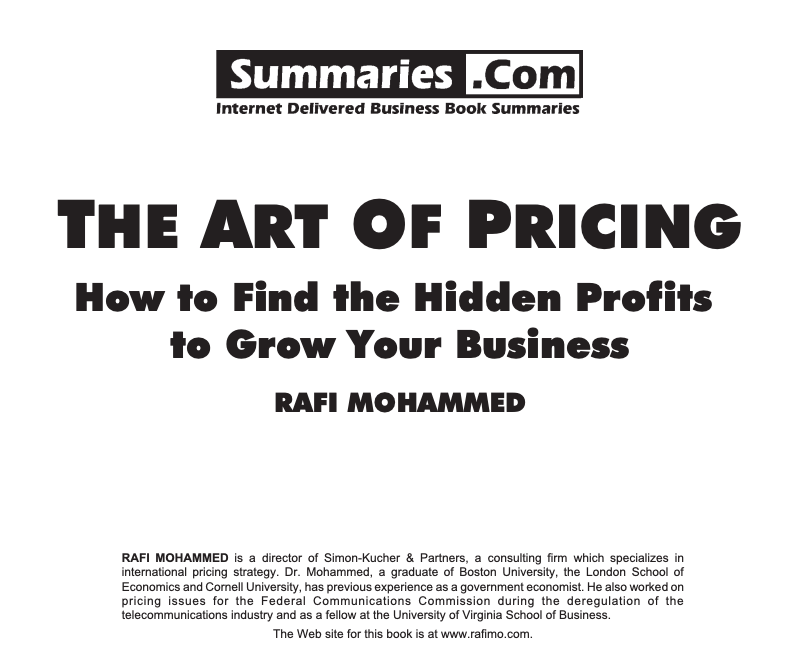Monetization Law Number #9
A 1% increase in your price can result in a 10% increase in your profit
Instituting core policy pricing actions results in powerfully consistent results for your business.
Don’t wait five years to increase your prices by 5%, an annual 1% increase compounds profits, and meets less customer resistance.
This chapter is the shortest of all the manifestos. Its message is simple. Consistently carry out small price increases to grow your monetization revenue.
The Rule provides a quick monetization heuristic i.e. a rule of thumb in operation, a kind of —do this— and you’ll be 80% of the way there.
Rationale explains why the rule works with deeper insights and its use in practice.
Rabbit hole provides more in-depth resources and recommendations for anyone wanting to spend more hours researching each topic.
⓵ Rule 📖
⓶ Rationale 🧠
⓷ Rabbit Hole 🐇
⓵ Rule: Monetization Law #9 📖
Don’t wait five years to increase your prices by 5%, an semi-annual or annual 1% increase compounds profits, and meets less customer resistance.
⓶ Rationale: Monetization Law #9 🧠
1%! A pricing power? An Example
The example below shows a typical overview of financials. Sales less variable (marginal costs of selling product such as cost of goods) less fixed expenses (salaries, office etc).
The original net profit of 10% - can be increased by 10% to 11% by just increasing the sales price from 100 to 101.
Yes, a 1% increase in price can lead to a 10% profit increase!
⓷ Rabbit Hole: Monetization Law #9 🐇
Choosing your 1%
The power of small price increases shows that they should be a core part of your monetization strategy.
Best done by linking your price to an anchor, such as price inflation - consumer price index, market positioning or other internal markers.
🐇 Additional Research 🐇
Rafi Mohammed’s paper on the art of pricing is a good jump-off point if you want to delve further into 1% pricing power



